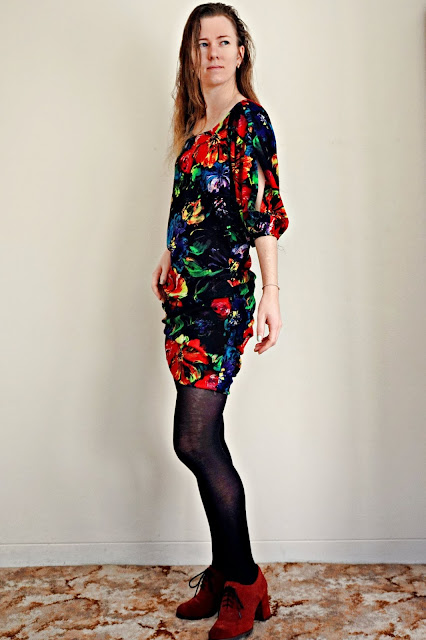This is the Lorenzo Jungle Dress, a casual winter/trans-seasonal dress. The fabric is a Liberty Lantana called Lorenzo from The Fabric Store. It's 80% cotton and 20% wool, so it's a similar weight to a flannelette but nicer feel and quality.
My initial thought for this fabric was to make a pinafore. But the fabric is very colourful and the print pretty kitschy so I was concerned it might be a bit too childish made into a pinafore. I flicked through my patterns to see what else I had that might work for the fabric and saw the dress on the cover of Stylish Dress Book (pattern E in the book) and thought it could work. I couldn't decide between the two so posted both options on Instagram asking for opinions, and the stylish dress book pattern narrowly won out.
I have made this before in a wool a number of years ago and retired it from my wardrobe earlier this year. So I knew it was something I could make easily, and knew the changes I'd want to make sewing it up a second time. Given how loose and full the dress is I decided to lengthen the hem and also narrow the pieces. The front is pleated and the lower back of the dress is gathered, so it was easy to reduce the bulk by placing the pieces over the fold line so that they were smaller. I also cut the pieces straight up the sides as the weight of this material didn't need anything extra.
This dress is an incredibly easy make. There are very few pieces, one for the front, two for the back, sleeves and patch pockets. The sleeves are cut a little narrow and do not have much in the way of fullness and the sleeve cap. Combined with the loose trapeze shape this can mean that the dress rises up when lifting up your arms, another reason why I lengthened the hem. For the hem I added around 10cm so that I would have enough extra fabric there to do some trial and error on deciding the right length.
In the end I think this dress struck a good balance in using the kitschy fabric but not turning out too childish. It's a fun print, and while it's probably designed with childrenswear in mind, I love a great print and don't think there's any problem with adults wearing something bright. This definitely isn't work wear, but I think it will find a good place in my wardrobe.

















































